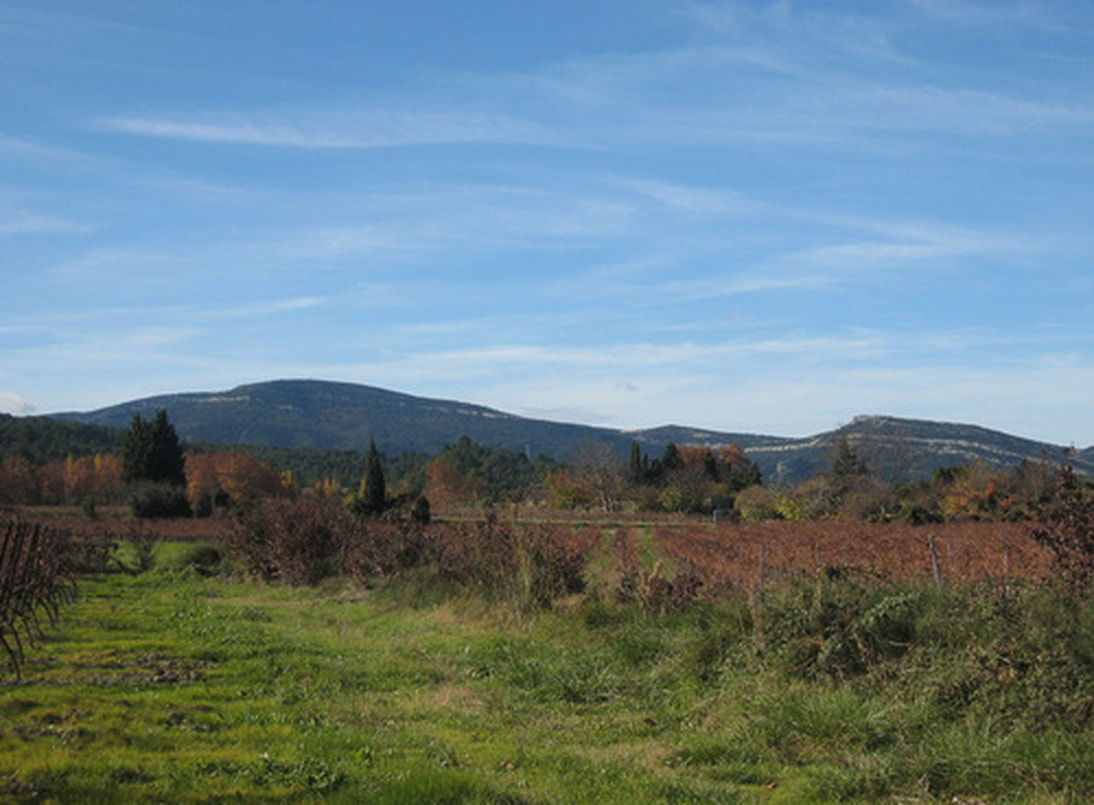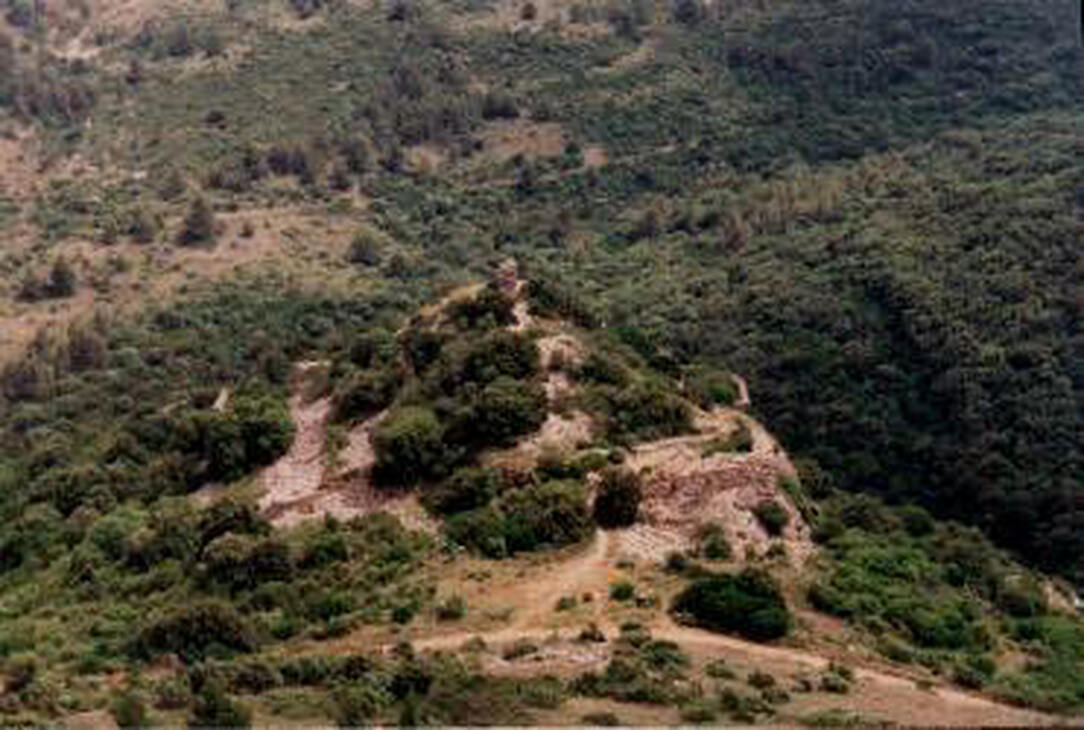The Legend of the Treasure of Alaric

The legendary treasure of Alaric is based on a sentence, a statement - "Between the Alaric and the Aricou, is the fortune of the three Lords'. A variation of the sentence is; 'Between Alaric and Alaricou will be found the treasure of the three kings Solomon, Ceasar and Alaric ...' Even now this saying is handed down from generation to generation in the Aude, parents enthralling their children with the legend of a famous buried treasure. What is this fortune and treasure of Solomon, Ceasar and Alaric? One 'super' treasure or an accumulation of different treasures? Did it start with Solomon, as he is the oldest king historically? Does the treasure have a relationship with Alaric, king of the Visigoths?
The mountain of Alaric [see photo above] is named after the Visigoth King, Alaric II and the legend goes that this mountain houses the grave "fragrant with incense, myrrh and lavender" of this famous king. Another secret is carefully guarded: the location of the fabulous treasure of Rome which is hidden there.
The town of Moux is found on the slopes of Mount Alaric and has some links to the famous legends of treasure. In the Medieval Age the inhabitants depended on the Lords of Lagrasse, on Simon de Montfort and on the Bishop of Narbonne. The town is also linked to the existence of a place of worship and a cult at the Fountain of Santat. There seems to be some 'mystery' surrounding this as one researcher asks: Why were the eminent archaeologists reluctant to take note of the discovery in 1840 of three votive altars raised there? Apparently on the three altars is engraved the name of LARA (Guillaume de LARA), which is the name of a Lord of Moux from the 12th century [You can read more about this HERE]. This figure is related in a legend which was published by Prosper Mestre Huc & which seems to be clouded in some mystery (see below). Is Guillaume de LARA one of the Lords referred to in the legend: Between the Alaric and the Aricou, is the fortune of the three Lords'. Perhaps the two variations of the sentences of the treasure of the Kings and of the Lords relate to separate groups who owned the treasure or knew of its existence?
So many questions, many possible solutions but still with that other nagging issue, is the treasure of Alaric still there?
A treasure always starts with a legend, first of all, and a treasure is hidden by people who do not want the vulgar to find it. For this, they will only - in legend - offer insiders clues that could be used to find any treasure. These various indications will be different and full of confusion. And after the passage of time these legends become all rolled into one - the treasure becomes that which involves the Templars, Otto Rahn, the Rosicrucians, a cursed king and robbery. It will also involve discovered parchments, if possible, by a mysterious priest. The contribution of physical evidence is much more significant, pieces of gold and silver are irrefutable proofs. Finally, with the intervention of Mr. Lobineau the best effect will give credence to this legend.
This is the genesis of the treasure of Rennes-le-Chateau, but at Rennes there was no legend, just a treasure. At Moux, there is the legend, but no treasure! For this reason there are those that are looking for it [the treasure], from history, in the region of the Mountain of Alaric.....
Mount Alaric in history.
A wonderful mountain not visible from the pas du Loup (on the road to Béziers) - Mount Alaric has long been a key border defense system since the kingdom of the Elysique - which overlooked the Aude valley, and allowed those early tribes to watch the trade and commercial exchanges of the Mediterranean and its port. This location has always been exploited by man. The caves have yielded traces of occupation that lasted up to our day, from the Chalcolithic period (ca. 2600 BC to the Roman Period), the Camp Roland (a Hillfort in the Aude which gets its name from the mediaeval hero, but the construction dates fare rom the late Bronze/Early Iron age). Le Roc Gris is visible for miles around - at 418m it's a ridge-crest on the shoulder of Mount Alaric [600 m.] The terrain is harsh and arid - the fort was not occupied for long periods, though remains of amphorae of Massalia [Marseille] have been found. The oppidum is one of a series from Carsac [proto-Carcassonne] in the west to Pech Maho on the Mediterranean, in the east. It was built by a tribe known as 'les Elisyques’ - a tribe centred on the extensive
Montlaurès oppidum or fortified hill-settlement. This rocky outcrop history is littered with historical ruins and legends.
In fact, another name for the Roc gris is Roc de Roland. Legend has it that Roland used this rocky outcrop to escape his enemies, on his horse Alaric over the Montagne Noire (on the other side of the valley of the Aude). The momentum of the horse was so powerful that the hoof print of one of its hooves is engraved forever in stone (this has a strange echo in a line from the poem Le Serpent Rouge and the verse entitled Virgo - "And marvellous, when from the leaps of the four horsemen, the shoes of one horse had left four imprints on the rock, here is the sign which DELACROIX had given in one of the three pictures from the chapel of angels").
A fortified church called St. Peter of Alaric is also near Moux - as well as many traces of shards that are of Roman origin, tegulae, imbrices, trademarks of the potters of Graufresenque, Iberian coins, as well as Roman, Arab, etc. It is found, that in the very early history of Moux, this town was associated with the mainstream commerce of antiquity, via the exchange routes between Mediterranean ports and Aquitaine and the West, for metals in the Casitérides Islands, and finished products from Greece, Rome, and the Orient. Subsequently, the route became essential to the Roman development and expansion of the area, since Narbonne was later favoured over Marseilles and Agde by the Romans.
Therefore the tracks of a possible treasure must date back to Roman times.
The frequent passage of kings, popes and nobles via a village of a few souls, without an economic role in its history encourages us to reflect on the events that eventually left their irrefutable traces. There was a discovery in 1850 of three votive altars supposedly of Roman origin- which in fact appears to have turned out to be false, the epoch of those who found the altars were those called 'antiquarians' rather than professional archaeologists. One 'antiquarian' at this time was the Chevalier Du Mege, an 'archaeologists' who was somewhat involved with Scavola Bée (actually Prosper Mestre Huc - hiding under a pseudonym) and we can trace by their writings and discoveries, a riddle that is now difficult today to unravel. This is related to a Medieval figure called Guillaume de LARA. Is it related to the legendary treasure?
Today there is nothing left of the remains. The CASSINI family, cartographers to the kings of France hid the castle (?of Moux) by placing it on the hillside of Montbrun .. We were able to see this exceptional document in the collection of William the Grave ...
Faillenc and Bevas are also situated directly at the foot of the Mountain of Alaric, and the source of the Font de Santat was in its domaine ......field workers who dug the well to allow for better flow, certainly found quantities of Roman coins. These parts follow the ancient passing of the Way of Aquitaine.... Continuity of the site, from the 1st century to the 4th, suggests an exceptional site, its cult attracting pilgrims from all over the region and this enriched the magistri pagi, responsible for its administration. This booty amassed over centuries allowed the magistri to prosper, it is only much later, in the early fourth century that fanum is abandoned during major invasions.
All sites in the region appear to be littered with ceramics and tegulae which reveal traces of burning. Areas were destroyed, the booty won and animals, women and children taken as slaves. The treasure hoards were usually buried before the owners escaped. This explains the findings in the area of Mouxoise the Roman coins.
The country was always prosperous, with peace that lasted three centuries, with short periods of insecurity, the richness flowed abundantly. We believe that the site's hundreds of coins found during work in the vineyards illustrate this. It is the same at sites such as the fountain of Santat.
This can be considered as the basis of the legend of the treasure of Alaric, the parameters of this legend are much more complex, but its genesis is rooted in the gold of Rome.


Above - the Mount of Alaric and a Painting of the Castle of St Pierre d'Alaric, painted around 1740 by an anonymous artist, we can distinguish the hovels, a now ruined chapel and the tower remains of the original castle.